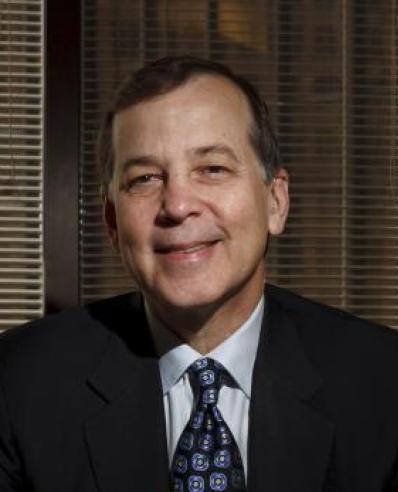“Strategic thinking is the most critical differentiator between CFOs and CEOs.” — Mr. Rich Brady, the CEO of the American Society of Military Comptrollers (ASMC), Global Chair of the Institute of Management Accountants (IMA), and a CFO-turned-CEO.
A conversation with Mr. Rich Brady: Our discussion explored the CFO role’s evolution, what makes CFOs attractive CEO candidates and how finance leaders can elevate their strategic thinking skills.
Investing in the future: Brady encourages finance leaders to recognize that the cost of investing in some emerging technologies (such as machine learning) can be relatively modest and lead to valuable long-term gains that include improving the organization’s strategic positioning.
Yes, but: Not every CFO wants to become a CEO. But most, if not all, CFOs should consider developing the same competencies and perspectives that Brady says CEO aspirants should cultivate.
Bottom line: It is all about elevating one’s game in helping the organization succeed.
___ ____ ___
Today, more current CEOs were previously CFOs than at any point in the past decade, according to the Crist|Kolder Volatility Report. What does it take for CFOs who aspire to the top spot to get there? I had the pleasure of putting that question to Mr. Rich Brady, the CEO of the American Society of Military Comptrollers (ASMC), Global Chair of the Institute of Management Accountants (IMA), and a CFO-turned-CEO. His response was illuminating: “Strategic thinking is the most critical differentiator between CFOs and CEOs.” During our conversation, Mr. Brady shared leadership and strategic insights gleaned from an illustrious military career that includes a combat tour in Iraq, multiple tours in the Pentagon, diplomatic postings, and finance leadership roles in the U.S. Marine Corps. Our discussion explored the CFO role’s evolution, what makes CFOs attractive CEO candidates and how finance leaders can elevate their strategic thinking skills.
When Brady entered the finance and accounting profession three decades ago, the finance function’s work centered on capturing, recording and reporting the organization’s financial information. CFOs were stewards of that financial information. Their work was rules-based, structured and compliance-focused. That changed, slowly at first, faster during and after the dot-com era in the early 2000s, and then at warp speed ever since as technology has driven disruptive change and the pandemic forced organizations to innovate faster than they ever had before just to survive. Meanwhile, finance and accounting tools emerged and evolved.
“Current systems do an excellent job of capturing, recording and reporting financial information,” Brady says. “That leaves finance and accounting professionals with more time to devote to higher-value activities, such as data analytics, decision support, scenario-building, forecasting, planning and similar work.” And it is these types of responsibilities that pave the CFO’s road to the CEO chair.
In addition, recent economic, geopolitical and policymaking risks have thrust CFOs in front of boards, investors and the media more frequently, further bolstering their CEO credentials. “Any time a crisis strikes — think of the difficult decisions that needed to be made during the pandemic — the CFO is front and center in those discussions,” Brady continues. “These high-stakes interactions have helped many CFOs strengthen critical communication skills and other soft skills that are crucial to the success of a CEO.” The CFO is increasingly market-facing alongside the CEO with analysts, investor road shows and other investor relations-related activities.
These competencies and experiences, and the profile elevation and exposure that come with the evolving role, make CFOs more attractive to boards seeking to fill CEO vacancies.
The road to CEO—first focus on collaboration and excellence as a CFO
It starts with the CEO-CFO partnership.
“Many CFOs are the right hand of the CEO because any decision you make as a CEO has resource impacts,” Brady notes. “And you want to know what those impacts are and whether they will create, or diminish, organizational value. Working very closely with the CEO enables you to see what the CEO is seeing — and how the CEO makes decisions.”
Without question, a key part of the CEO’s role is strategy. But before delving into CEO-level strategic thinking and decision-making, Brady identifies five ways CFOs can lay the groundwork for a potential promotion to the CEO role:
- Recognize how the CFO role has evolved. Specifications for open CEO positions — strong business acumen, organizational strategy-setting, crisis-response proficiency, deep knowledge of enterprise risk, and more — now have more in common with today’s CFO job description. This explains why CFOs were three times more likely to transition to a CEO role in 2023 than they were in 2021.
- Embrace digital transformation. Digital innovation is a table-stakes requirement at more companies, and the CFO controls the purse strings on investments in generative AI and other emerging technologies. Brady encourages finance leaders to recognize that the cost of some of these capabilities, including machine learning and automation in all its forms, is relatively modest but can lead to valuable long-term gains that include improving the organization’s strategic positioning.
- Maintain an enterprisewide perspective. “You’ve got to look beyond your finance and accounting silo. Talk to your counterparts throughout the organization and become their business partner,” Brady asserts. This requires understanding each function’s objectives and then translating those goals into financial and resource requirements.
- Continue to upskill. This guidance applies to CFOs and their entire teams. “You’ve got to stay abreast of changes in technology and business practices,” Brady says. Skilling the workforce is a challenge of the times, and boards take notice of executives who meet the challenge head-on.
- Take risks. “If you are going to become a CEO, you’re going to have to take risks,” Brady states. “Every decision is made with some degree of uncertainty. You have to be comfortable with that ambiguity, as well as offer a bold, strategic vision for the organization.”
All that said, there’s one more vital skill that CFOs with CEO aspirations need to develop, and it may be the most important one.
Deeper thoughts on strategic thinking
Brady emphasizes that to be a viable CEO candidate, most CFOs need to strengthen, refine and expand their strategic thinking skills.
This work starts by differentiating between shorter-term and longer-term planning. During their daily, weekly and quarterly routines, CFOs frequently engage in object-oriented strategic planning. When he was a CFO, Brady would conduct this work via a military approach known as “ends, ways and means.” The “ends” refer to the tangible goal or objective, the “ways” refer to the course of action needed, and the “means” are the resources needed to execute that approach.
“This is effective at a very tactical level — think of a military operation such as taking a hill,” Brady notes. “I can see the hill, which is not going to move. I can develop a plan to take the hill, and I get the resources I need to do so. That approach works very well when your target is static. It’s less effective when you’re planning for five-year and even longer-term targets that are guaranteed to change.”
For longer-term strategic planning, Brady believes CFOs and CEOs are better served by identifying potential future environments that may emerge, developing core strategies for each scenario and identifying which environment is optimal for the organization. They then should drive their organization toward that optimal environment, adjusting along the way as inevitable changes occur.
“People often confuse long-range strategies with scenario planning that supports operational plans,” Brady asserts. “You might update your operational plans every six months or so, but in my view, strategic planning should cover a minimum of three to five years.”
Brady makes several other points regarding the nature of strategic thinking and planning that CFOs should develop to facilitate, and perhaps accelerate, their move to the CEO’s office:
- It’s not the plan, it’s the planning. Nobody can predict the future, so any given plan — which will require updating or replacing at some point — matters less than the planning process itself. “We have some sense of what the weather will look like tomorrow or even two weeks from now,” Brady says, “but nobody can predict the weather five years from now. That means you have to be comfortable dealing with uncertainty and risk. You should develop scenarios and plans for various futures while establishing a vision for the future environment that you want to operate in as a business.”
- CEOs need to quickly transition between the tactical and strategic — and bridge the two. Brady has witnessed military generals pulled into pressing tactical issues, effectively address those urgencies and then quickly return to longer-term strategic matters. While urgency in business is not to be confused with a military crisis, CFOs and CEOs are similarly drawn into tactical discussions related to quarterly earnings several times a day. “To be an effective leader,” Brady notes, “you’ve got to be able to quickly move from a very tactical level back to the strategic level while understanding how those tactical-level actions affect the overall strategic direction: Do we need to make some adjustments, or can we continue to move forward as planned?”
- A contingency mindset is crucial. “All CEOs face unanticipated crises, and their overall performance depends not on the crisis itself but on their response to it,” Brady notes. CFOs’ enterprise risk management focus and core expertise — what Brady describes as a “contingency mindset” — are well-suited to this chief executive challenge. “If you’re continually thinking through various scenarios,” he adds, “you’re unlikely to land on the exact crisis that arises. However, you will have developed response plans that can be adjusted to address the matter at hand.” As Brady explains, it is all about exercising the “contingency mindset” muscle.
- Maintain “option space.” Brady notes that CEOs pay close attention to getting the timing of a strategic decision correct. “A large part of the CEO role is about creating and maintaining ‘option space’ so that the odds of making the right decision at the right time increase,” he explains. “You don’t want to choose an option too soon or too late. Instead, you should maintain as broad of an option space as you can, for as long as you can, until you get a sense of which direction things are heading.” For example, an airline CEO needs to maintain option space around the future price of jet fuel. A five-year forecast for crude oil prices might range from $50 to $150 per barrel. But what happens if oil prices hover near $50 for an extended period or briefly spike to $140 before returning to a much lower level? “You want to leave that option space open as long as you can before making a decision to implement major changes in managing oil prices,” Brady says.
Do this, even if you don’t want to become a CEO
Not every CFO wants to become a CEO. But most, if not all, CFOs should consider developing the same competencies and perspectives that Brady says CEO aspirants should cultivate. It is all about elevating one’s game in helping the organization succeed.
“Developing and sharpening these leadership skills is important from a competitive and career standpoint,” Brady notes. “CFOs who drive innovation, lead digital transformation initiatives, manage risk and lead strategic planning activities are going to provide more value to the organization. It’s important for even top finance leaders to continuously sharpen and level up their skills, which is why organizations like IMA are so important due to their emphasis on new courses and research into where the profession is going. And their organizations are going to generate more value because of their contributions. That’s the opportunity that most CFOs should see here.”
By doing so, CFOs will create more “option space” not only for their companies but also for their career trajectories.
This article originally appeared on Forbes CFO Network.





